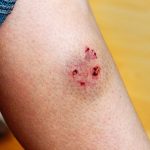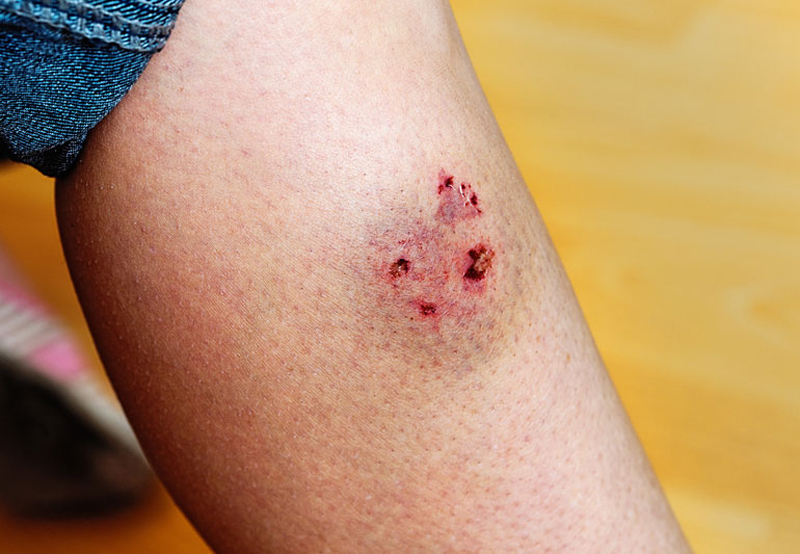 Animal bites are usually puncture wounds and are most often from pets, particularly dogs. Cat bites are more serious than dog bites, because they tend to be deeper and thus much more likely to become infected.
Animal bites are usually puncture wounds and are most often from pets, particularly dogs. Cat bites are more serious than dog bites, because they tend to be deeper and thus much more likely to become infected.
Puncture wounds occurring when a person’s flesh is caught between the upper and lower teeth of an animal. Animal bites are usually puncture wounds and are most often from pets, particularly dogs. Cat bites are more serious than dog bites, because they are deeper and thus much more likely to become infected. Animal bites may cause superficial skin breaks with no bleeding, puncture wounds, major lacerations, or crushing injuries. Medical treatment should be sought if the person bitten has not had a tetanus shot within 10 years; if there is swelling, redness, pus, or pain present after the bite; or if the wound needs stitches.
A bite refers to an injury caused by the mouthparts of an animal, varying in severity from puncture wounds inflicted by bloodsucking insects to extensive injuries resulting from shark or crocodile attacks. Animal bites, particularly those from carnivores, can cause significant mechanical damage. Severe wounds and lacerations involving major blood vessels can lead to substantial blood loss and physiological shock. The transfer of bacteria present in the animal’s mouth during a bite can lead to serious infections, while the risk of tetanus infection is also a concern. In regions where rabies is prevalent, it is important to recognize that any mammal has the potential to harbor the rabies virus and transmit it through a bite. Prompt medical attention and appropriate preventive measures are crucial in the management of animal bites to minimize complications and ensure optimal recovery.
For any animal bite, except minor injuries, it is advisable to seek medical advice. In cases where there is a risk of rabies, medical attention should be sought promptly. The standard treatment typically involves cleaning and examining the wound. Rather than stitching the wound, it is usually left open and dressed to avoid bacterial proliferation. Additionally, preventive measures may include antibiotic drug treatment and an anti-tetanus injection. If there is a potential for the animal to be infected with the rabies virus, anti-rabies vaccine, along with immunoglobulin, may also be administered. It is important to consult with healthcare professionals to determine the appropriate course of treatment based on the nature and severity of the bite, ensuring proper wound care and minimizing potential complications.
